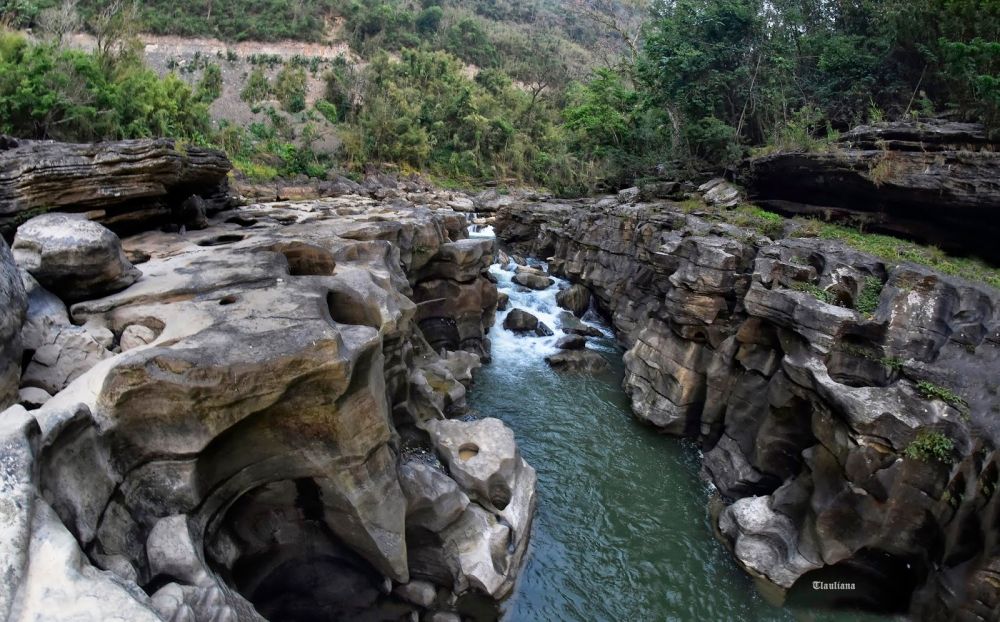

Kolasib, a district in the north of Mizoram, India, is home to the serene and picturesque Tlawng River, also known as Katakha or Dhaleshwari. It is the longest river in Mizoram, stretching over about 185 kilometers. The Tlawng River meanders through lush green hills and subtropical forests, offering a breathtaking landscape for tourists seeking tranquility and natural beauty.
Tourism along the Tlawng River is relatively young compared to other destinations in India. Historically, Mizoram itself was less traversed by outsiders due to its remote location and stringent travel restrictions during the years when it was a Union Territory. However, since gaining statehood in 1986, Mizoram has slowly opened up to tourism.
The tourism industry around the Tlawng River began to gain attention in the early 2000s as domestic visitors and adventure enthusiasts discovered its potential for river activities and its unspoiled landscapes. Pronounced cultural shifts and a growing appreciation for Northeast India's unique natural environments have contributed to Tlawng River's emergence as an appealing site for eco-tourism and adventure tourism.
Tlawng River offers exciting prospects for tourists, including angling, picnicking, and boat rides. The river is located close to Tuirial Airfield, which has historical significance as a remnant of World War II, further enhancing the touristic appeal of the region.
Near the river, one can explore the quaint town of Kolasib, which serves as a gateway to other Mizoram attractions. The cultural heritage and the warm hospitality of the Mizo people are among the many draws for tourists visiting the area.
Sustainable tourism and eco-friendly practices have gained prominence in recent years along the Tlawng River. There has been growing awareness and effort to maintain the ecological balance while promoting tourism activities. New trends also see an increase in homestays that provide an authentic experience of Mizo lifestyle and cuisine to the visitors.
The government has been working on improving infrastructure such as roads and bridges to make the locations more accessible without disrupting the region's ecological balance. This balance forms the essence of the eco-tourism trend that is gaining momentum in Mizoram, including the Tlawng River area.
With advancements in digital connectivity and social media, remote destinations like the Tlawng River are becoming more widely known, causing a significant upturn in cultural and nature-based tourism in Kolasib. As a result, there are concerted efforts to train the local community in hospitality management and conversational English to cater to a global audience.
Tourists are thus encouraged to visit Tlawng River, Kolasib not only to enjoy the pristine surroundings and participate in water-based activities but also to immerse themselves in the depth of Mizo culture and history.